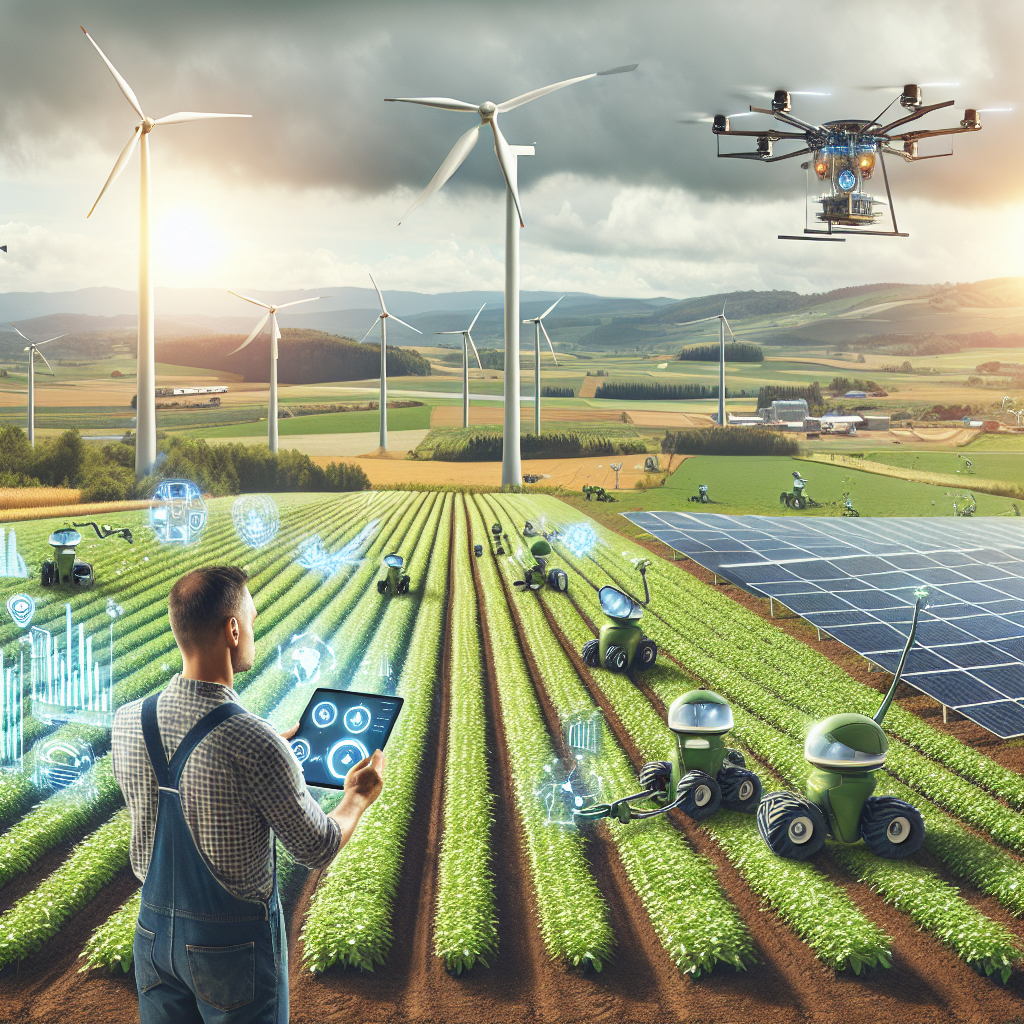Harnessing AI for Sustainable Agriculture
Introduction
As the global population continues to grow, the demand for food is increasing at an unprecedented rate. At the same time, the resources needed to produce food, such as land, water, and energy, are becoming scarcer. This has put pressure on the agricultural industry to find more efficient and sustainable ways to produce food.
One of the most promising technologies that can help address these challenges is artificial intelligence (AI). AI has the potential to revolutionize agriculture by enabling farmers to make data-driven decisions that can optimize crop yields, reduce waste, and minimize environmental impact. In this article, we will explore how AI is being harnessed for sustainable agriculture and its potential to transform the industry.
How AI is Transforming Agriculture
AI is being used in various ways to improve agricultural practices and increase productivity. One of the key applications of AI in agriculture is precision farming. Precision farming involves using sensors, drones, and other technologies to collect data on soil conditions, weather patterns, and crop health. This data is then analyzed using AI algorithms to provide farmers with insights on how to optimize their farming practices.
For example, AI can help farmers determine the optimal time to plant crops, the amount of water and fertilizer to use, and the best harvesting techniques. By using AI to make data-driven decisions, farmers can increase crop yields, reduce input costs, and minimize environmental impact.
AI is also being used to develop smart farming systems that can automate various tasks on the farm. For example, AI-powered robots can be used to plant seeds, weed fields, and harvest crops. These robots are equipped with sensors and cameras that allow them to navigate the farm and perform tasks with precision. By automating these tasks, farmers can save time and labor costs, as well as reduce the use of chemicals and fertilizers.
In addition to precision farming and smart farming systems, AI is also being used to develop predictive analytics tools that can help farmers anticipate and mitigate risks. For example, AI algorithms can analyze historical weather data to predict droughts or floods, allowing farmers to take preventive measures to protect their crops. AI can also be used to monitor crop diseases and pests, enabling farmers to take timely action to prevent outbreaks.
Overall, AI has the potential to revolutionize agriculture by enabling farmers to make smarter decisions, increase productivity, and reduce environmental impact. By harnessing the power of AI, the agricultural industry can become more sustainable and resilient in the face of climate change and resource scarcity.
Challenges and Opportunities
While AI holds great promise for sustainable agriculture, there are also challenges that need to be addressed. One of the main challenges is the lack of data. In order for AI algorithms to be effective, they need access to large amounts of high-quality data. However, many farmers do not have the resources or expertise to collect and analyze this data. This can limit the effectiveness of AI in agriculture and hinder its adoption.
Another challenge is the cost of implementing AI technologies. While the cost of AI technologies has been decreasing in recent years, they can still be prohibitively expensive for small-scale farmers. In order to make AI more accessible to all farmers, there needs to be greater investment in research and development, as well as incentives and subsidies to encourage adoption.
Despite these challenges, there are also opportunities for AI to transform agriculture in a positive way. For example, AI can help farmers reduce waste by optimizing the use of resources and minimizing losses. AI can also help farmers adapt to climate change by providing them with real-time data on weather patterns and enabling them to make informed decisions about crop management.
Overall, the potential benefits of AI in agriculture far outweigh the challenges. By harnessing the power of AI, the agricultural industry can become more sustainable, efficient, and resilient in the face of global challenges.
FAQs
Q: How is AI being used in precision farming?
A: AI is being used in precision farming to collect and analyze data on soil conditions, weather patterns, and crop health. This data is used to provide farmers with insights on how to optimize their farming practices, such as determining the optimal time to plant crops and the amount of water and fertilizer to use.
Q: What are some examples of smart farming systems powered by AI?
A: Some examples of smart farming systems powered by AI include AI-powered robots that can plant seeds, weed fields, and harvest crops. These robots are equipped with sensors and cameras that allow them to navigate the farm and perform tasks with precision.
Q: How can AI help farmers mitigate risks?
A: AI can help farmers mitigate risks by developing predictive analytics tools that can anticipate and prevent potential threats, such as droughts, floods, crop diseases, and pests. By using AI to monitor these risks, farmers can take timely action to protect their crops and minimize losses.
Q: What are some of the challenges of implementing AI in agriculture?
A: Some of the challenges of implementing AI in agriculture include the lack of data, the cost of AI technologies, and the need for greater investment in research and development. These challenges need to be addressed in order to make AI more accessible to all farmers and maximize its potential benefits.
Conclusion
AI has the potential to revolutionize agriculture by enabling farmers to make data-driven decisions that can optimize crop yields, reduce waste, and minimize environmental impact. By harnessing the power of AI, the agricultural industry can become more sustainable, efficient, and resilient in the face of global challenges. While there are challenges that need to be addressed, the opportunities for AI in agriculture are vast. With greater investment in research and development, as well as incentives and subsidies to encourage adoption, AI can help transform agriculture for the better.

